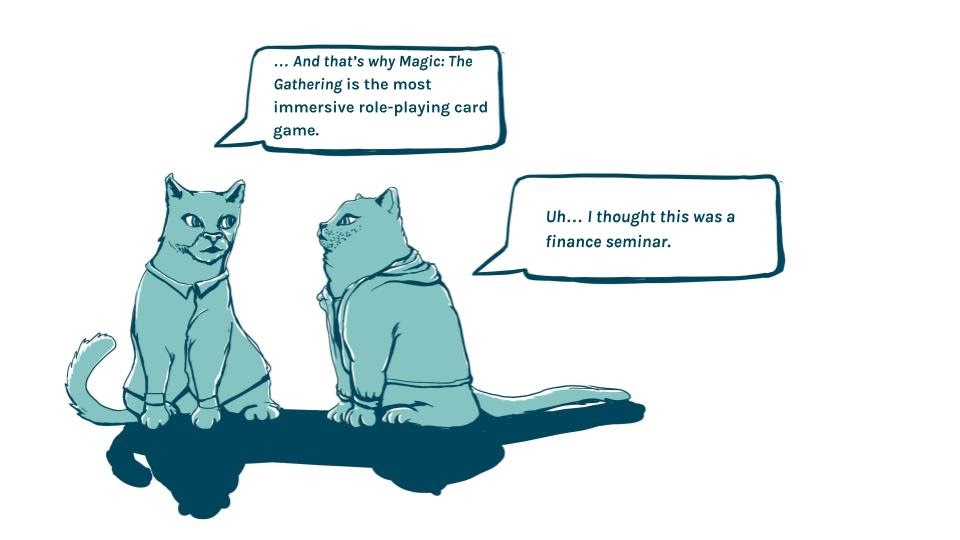Written by Maria Camasmie
October 13th, 2020
Blog Writing for Beginners

Blog writing is like playing cornhole. It’s not as easy as it looks.
But unlike the game designed by Lucifer himself, blogging requires neither a specialization in Newtonian physics nor extreme flexibility. With just a bit of practice, commitment, and this article (shameless plug), you’ll be more than ready to start posting.
And in return, you can teach me how to play cornhole. Have your people talk to my people.
So, whether you’re writing for a personal website, a popular guest blog, or a business, read this handy-dandy guide on blog writing for beginners.
Effective Blogging: What Does it Take?
To achieve true blogging excellence, one has to meld together the four components of an impactful blog.
They are:
- Audience Awareness
- Clear Formatting
- Snappy Writing
- A Unique Point of View
This article isn’t just a list of blog writing tips for beginners, it’s a guide on effective blog writing. Read on for your go-to how-to on captivating an audience with your words.
Audience Awareness: How to Write to the Right People
Whether it was your mother, your therapist, or your ex-girlfriend, you’ve probably been told, “you can’t please everyone.” (Okay, maybe your ex said, “you can’t please anyone.”)
For the rest of you, think of this phrase when you’re planning your blog posts.
If you attempt to write for every clicker, skimmer, and Yelp-rage-reviewer on the Internet, you’ll never be fully satisfied or successful. If your target audience is left undefined, you won’t reach the right readers, and your writing will go underappreciated.

Before publishing any articles, first identify a niche, like:
- An industry like tech, energy, or education.
- A fandom like Dungeons & Dragons, Settlers of Catan, anime, or Studio Ghibli films.
- A certain age group like job-hunting Millennials, Gen-X mothers, or Boomers who want to break into the TikTok scene.
- A profession like female engineers, LatinX writers, or medical clowns.
- A hobby like knitting, cooking, gardening, or horse rearing.
No matter how entrenched you are in your niche, you still have to do your due diligence when crafting blogs. Your intuition and perspective, while important, won’t be enough to sustain long-term readership on their own.
How to Sustain Long-Term Readership
To keep your audience hooked, follow these best practices:
- Consistency – Finding readers is just one part of the equation. Maintaining them requires consistent posting and consistent quality. Without one or the other, your blog won’t stick.
- Search Engine Optimization – SEO is the internet alchemy that turns keywords into clicks. While technically not necessary for blogging, it’d be a waste not to take advantage of the mysterious magic that drives traffic to your blog. By using simple resources like a keyword generator, you can shape your articles to show up closer to the top of SERPs (search engine results pages).
- Content Curation – Even if your article topics are a hit, readers will leave if they don’t encounter compelling, original content. Scope out competitor blogs—offer tips, suggestions, and info unique from theirs, and beat them in quality and readability. Ask yourself: why would someone read my articles and not theirs?
- Omnichannel Presence – Connect all your sites, social media channels, and posts through effective linking and CTAs (calls to action). That way, you’ll generate traffic from multiple places associated with your brand.
- Research – You want your articles to be value-adding, thorough, and effective. Research your topics using reliable sources, then cite them properly. Correct, up-to-date content will establish you as an expert and thought leader in your field. Half-baked research may discredit your blog and alienate your audience. See how much you trust me right now? Research, baby. (finger guns; wink.)
Clear Formatting: How to Craft Readable Articles
Let’s face it: no matter how clever your puns or how relevant your topics, if your blogs are The Great Wall of Content, no one’s going to read past the intro.
The takeaway?
A well-written blog is a well-formatted one.
Before typing at the speed of light, use these formatting best practices:
- Whitespace – Create whitespace in your articles by shortening or splitting up paragraphs. We recommend writing no more than five lines per paragraph to give the text some space to breathe. Phew!
- Bulleted Lists – These bad boys are perfect ways to relay information without too much verbal hullabaloo, all while being easier on the eyes than a giant paragraph. Use them often. Also, people love lists. GIVE THE PEOPLE WHAT THEY LOVE, MAN.
- Punchy Intro and Conclusion – Get. To. The. Point. Intros should be short and sweet, building momentum for the rest of the article. Slightly longer intros are acceptable if you’re establishing a narrative or setting the tone with an attention-grabbing joke or premise. Conclusions should be snappy and impactful, landing a final CTA with a bang.
- Eye-Catching Headlines – Don’t let the word count fool you—headlines should take you far more than a few seconds to write. Not only do they have to be catchy, but they should also be concise, relevant to the content, and shareable. If you don’t think it would stick out on a social media feed, keep thinking.
- Images – Don’t be afraid to break up your text with some relevant pictures, videos, or gifs. As long as they align with the tone, voice, and topic of your article, a few images sprinkled in are a helpful addition to any piece.
- One-liners – Everyone loves a good one-liner. (Exhibit A.)
Remember, readability is key. (Exhibit B.)
Don’t let your resistance to the “return” key overshadow your powerful words and unique insights.
Snappy Writing: How to Achieve Writing That’s Punchy and Proper
Good writing is not always good blog writing.
Because, believe me, for all its brilliance, Gertrude Stein’s modernist genius would not make it in the SEO copy world (for, SEO writing is SEO writing is SEO writing is SEO writing).
This is all to say that effective writing for blogs requires more than just correctness and style.
While not at all prescriptive, there are a few rules you should follow that distinguish this form from your run-of-the-mill A+ college paper (or, even, your iconic, generation-defining poem).
The key term here? Snappiness.
Here’s how you achieve writing that’s not only correct but catchy as heck:
- Voice – Just like you have to know your audience, you have to know your voice (and stick with it). Are you funny? Professional? Friendly? Whatever that may be, consistency is key. Depending on your brand voice, you can dive into the world of humor, alliteration, puns, colloquialisms, and slang. Go ham, yo!
- Punchy – Punchiness is conciseness after a trip to the gym. (Cue the workout montage.) Not only should you strive to use fewer words to say the same thing, but you also need to focus on impact. That means prioritizing brevity over style but value over brevity. While your words should be concise, they should also be clever, memorable, and possess forward momentum.
- Flow – A good blog article will let your reader’s eyes glide down the page. Clunky writing, disjointed points, and run-on sentences offer a jagged, jerky experience that no one wants to read. Flow is about carefully planning your syntax, rhythm, and diction such that the reader’s experience is as smooth as possible.
- Proofread – This one’s a given. But, still, it needs to be said. Proofread your articles before publishing them. Jeez. Nothing is more jarring and unprofessional than typos and silly grammar mistkates. See? That made you feel funny, didn’t it? Don’t do that to your readers.
A Unique Point of View: How to Find Your Voice
Unless your blog is dedicated to breaking down the conspiracy theories behind an obscure fossil unearthed in the middle of Wisconsin in 1982, there are probably several (or even hundreds) of blogs just like it.
In other words, content alone won’t set you apart.
To stand out, you need to establish a unique point of view that readers will love and commit to.
Here are a few tips to get you started on the search for your writer’s voice:
- Read through your old journal entries for inspiration.
- Ask your friends and family what makes your opinions and observations different.
- Email a former teacher or mentor for insight on your personality and writing style.
- Find similarities between the voices of your favorite writers, bloggers, and podcasters.
- Create a list of traits that describe you (are you funny? Blunt? Relaxed? Quirky? Fiery?).
Don’t worry about pinpointing your voice perfectly all at once. These things take time. The more you write, the more you’ll hone in on your unique voice and style. Keep playing around with your words, and, soon, your perspective and personality will shine through.
Don’t Settle for Anything Less Than Stellar
No matter what, commit to blogging consistently. When you apply passion to the craft, it will reward you with new skills, insights, and readers.
Unlike cornhole, it is possible to improve at blog writing.
As long as you work hard, write frequently, and read good writing, you’ll improve and increase your readership. If you’re interested in hiring writers with the skills, the voice, and the experience to do this for you, request a free piece of content from us today.
Happy blogging, folks!